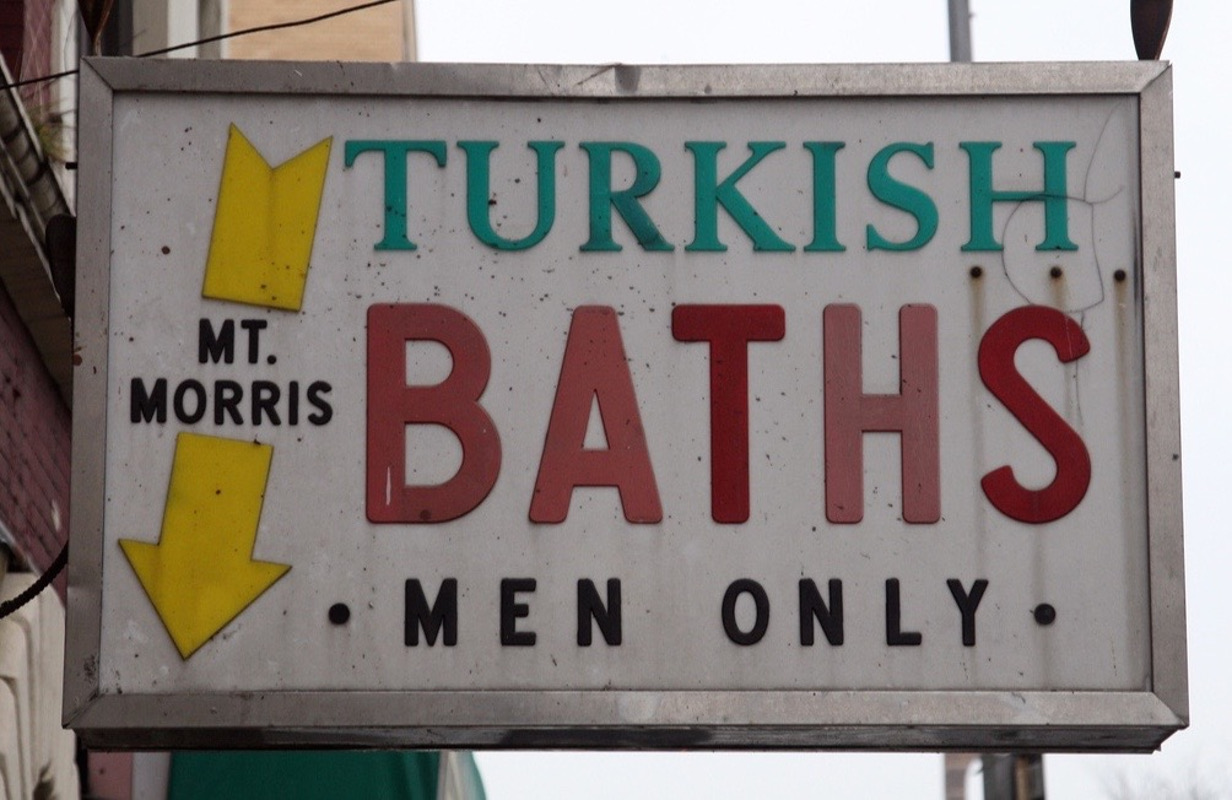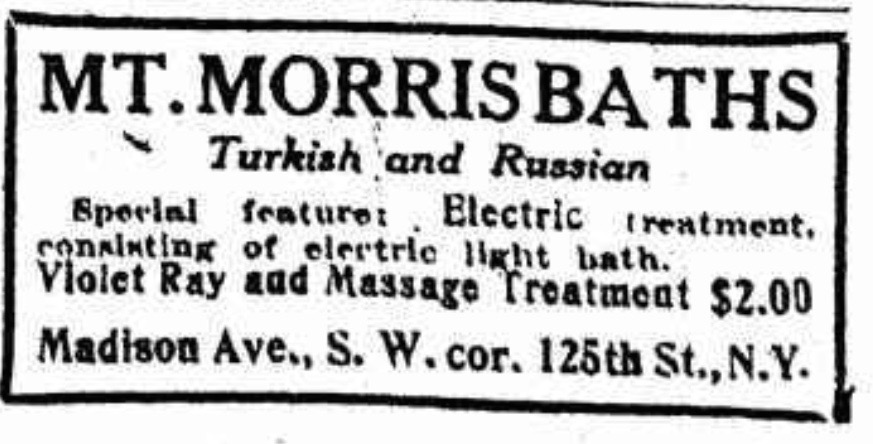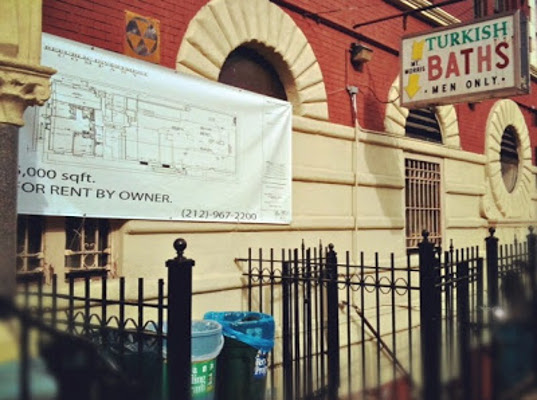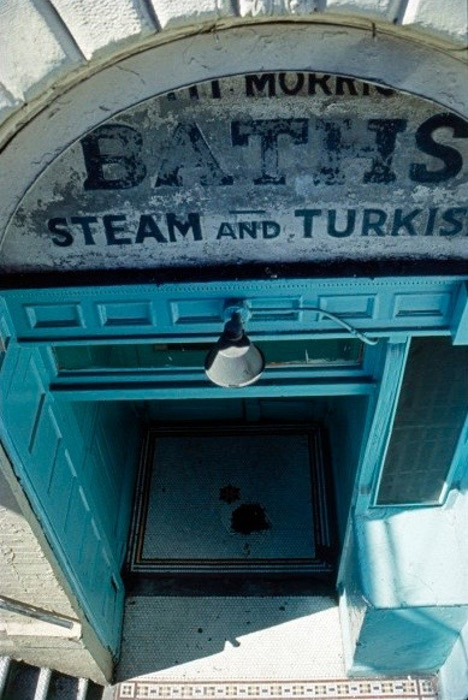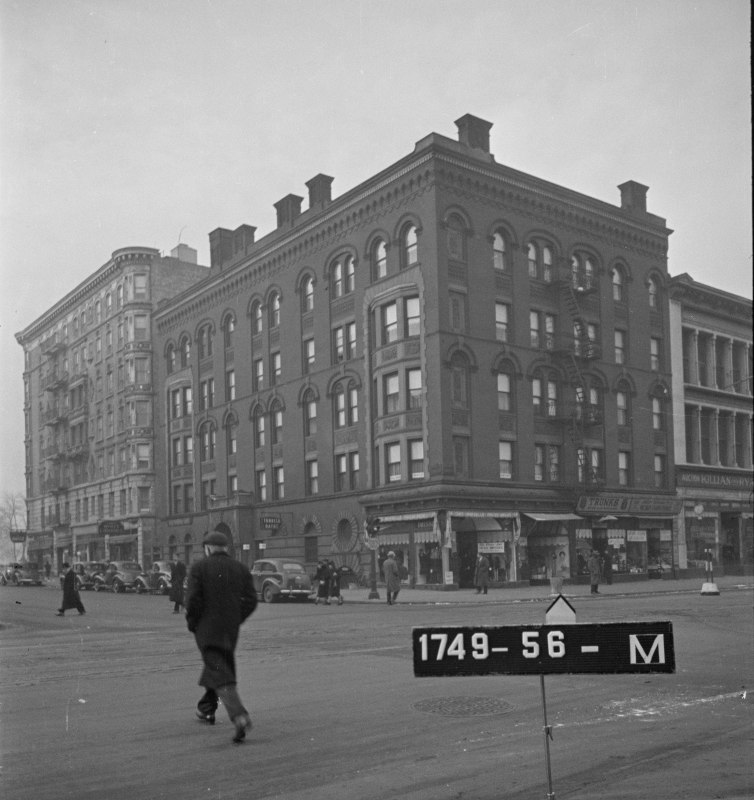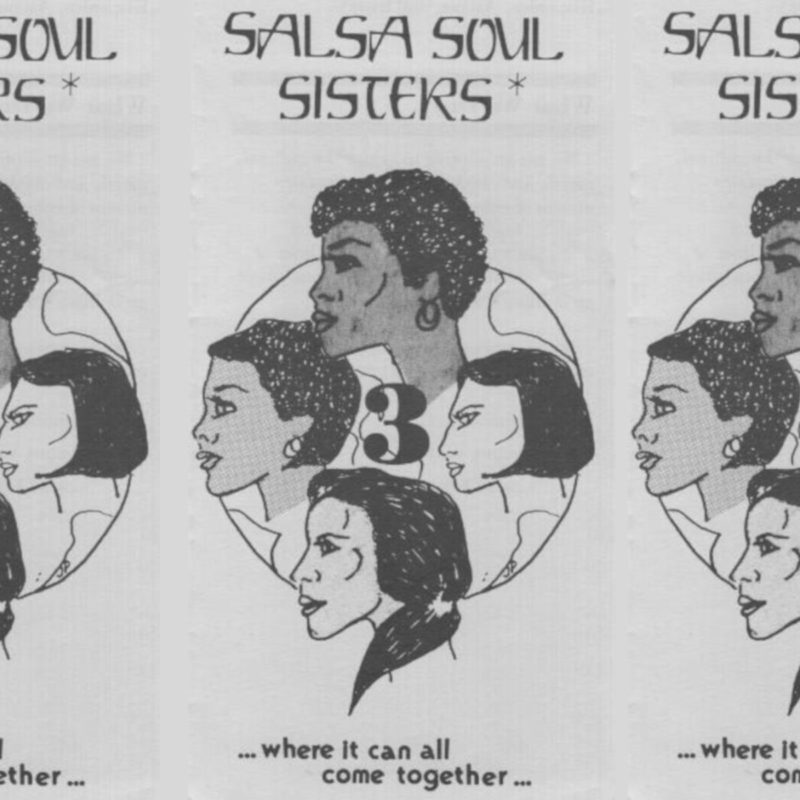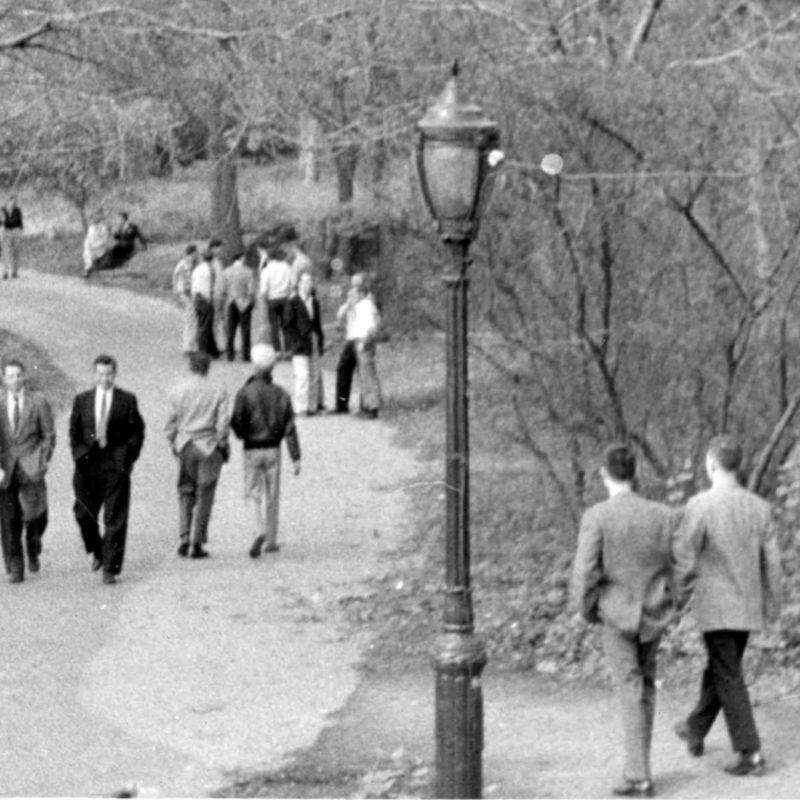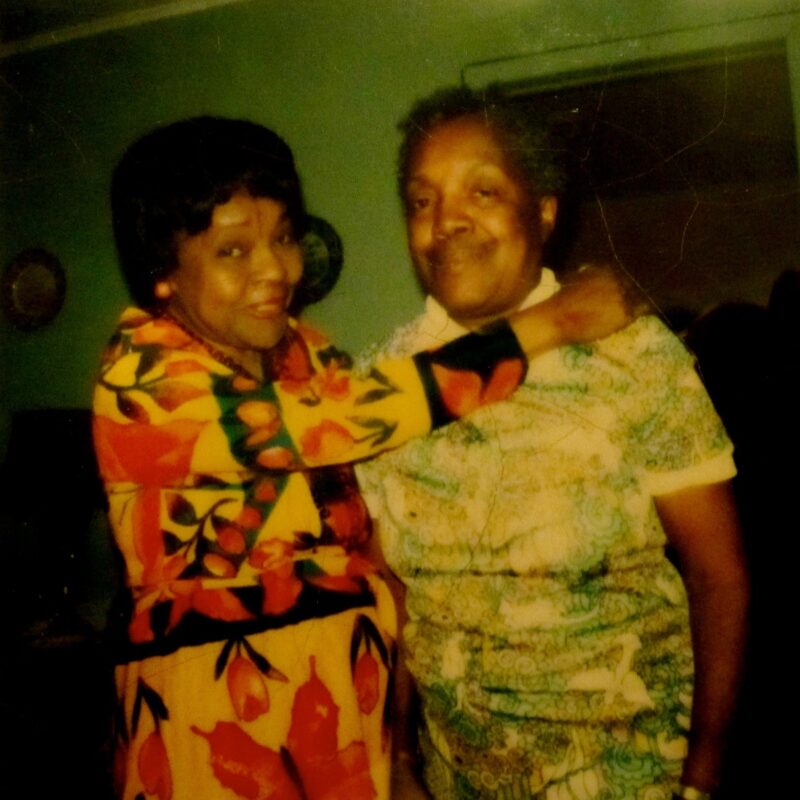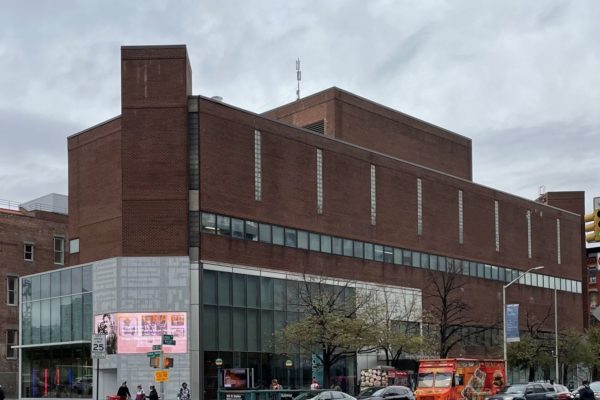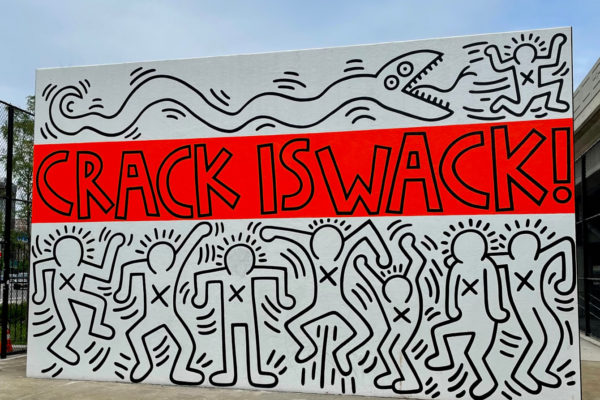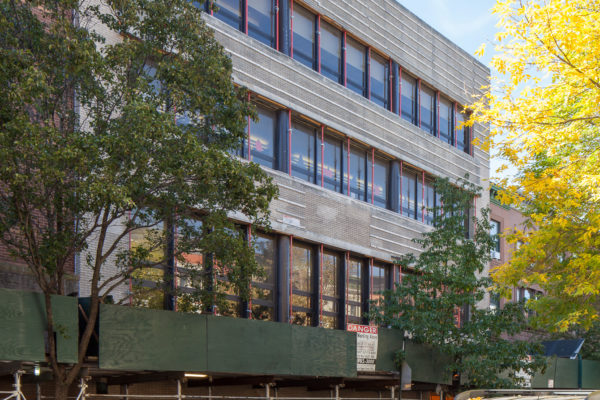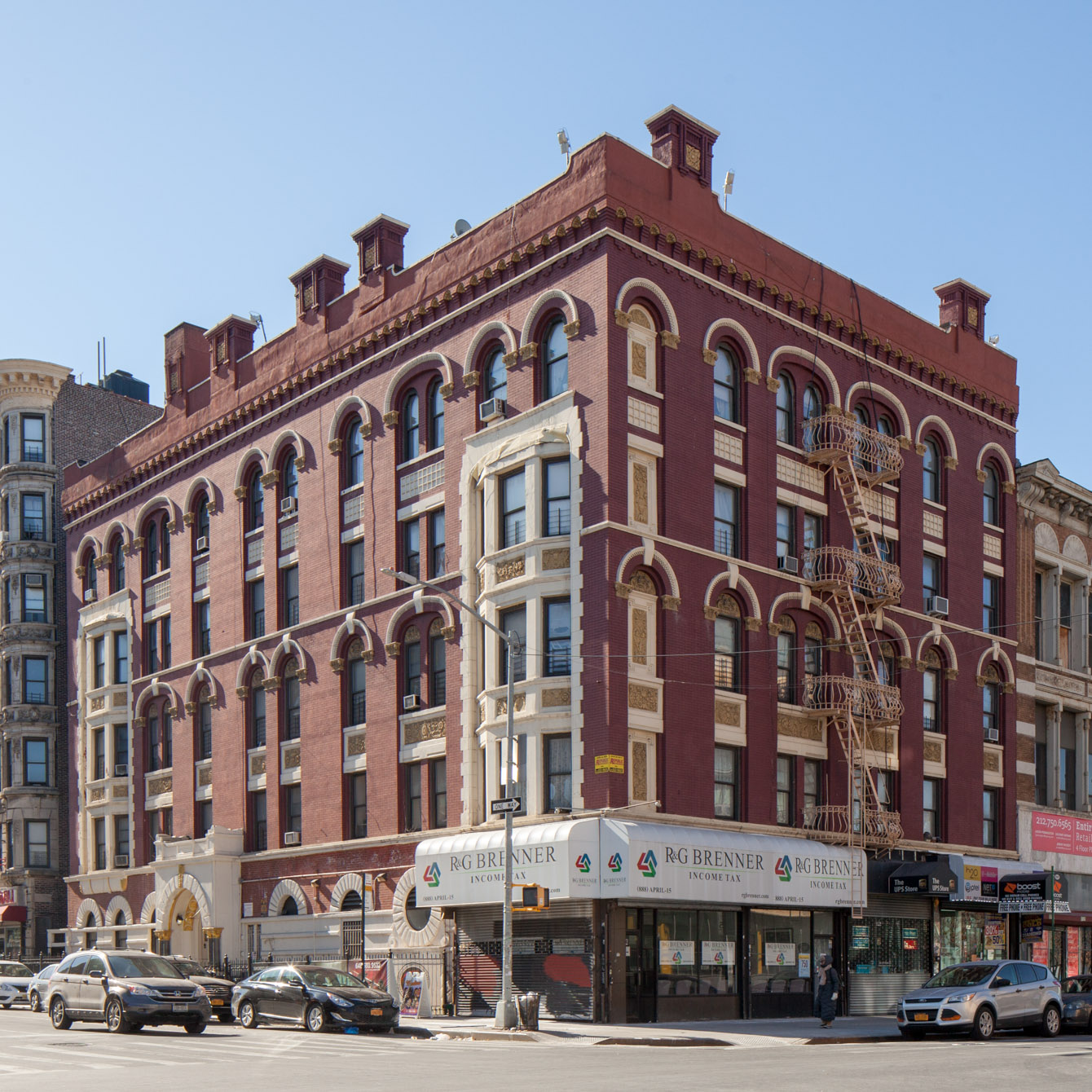
Mt. Morris Baths
overview
Between the 1920s and 2003, when it was closed by New York City officials, the Mt. Morris Baths was an important social center for gay African-American men and one of the longest operating bathhouses in New York City.
Until the 1960s, it was the only gay bathhouse in the city to admit African-American men due to overt discrimination.
On the Map
VIEW The Full MapHistory
Located in the basement floor of the Lohengrin apartment house, the Mt. Morris Baths (originally the Mayer Baths) was the first commercial tenant of this space. The establishment, featuring Turkish and Russian baths, catered to a mostly Jewish clientele and in the late 19th century was also known as a hangout for police officers. By 1915, the baths were renamed the Mt. Morris Baths, and by the 1920s and 1930s, African-American patrons began frequenting the baths reflecting changes in the demographics of the neighborhood.
When exactly it began to attract a predominantly gay, African-American clientele is unknown, but it was mostly likely in the 1920s during the Harlem Renaissance. In 1923, Carl Van Vechten, patron of the Harlem Renaissance, noted in his diary that he had visited the baths, which at the time was known for its “rough trade.” In 1930, Countee Cullen left his wife Yolande Du Bois for Harold Jackman, who he had allegedly met at the baths. Lincoln Kirstein characterized the baths as “a rendezvous” for “notorious homosexuals, deviated perverts, and merchant semen.” Reportedly, straight African-American celebrities frequented the baths in the 1950s, including Sam Cooke and Joe Louis. It was also noted that James Baldwin once brought Marlon Brando to the baths.
In the 1970s and ’80s, singer Jermaine Stewart, actor Gene Anthony Ray and legendary superstar Sylvester were patrons. Most likely in the 1970s a large rectangular illuminated plastic sign was installed at street level that read “Mt. Morris Turkish Baths – Men Only,” establishing a presumably overt gay presence in Harlem.
In October 1985, seeking to slow the spread of AIDS, New York State took the controversial position of empowering the New York City Department of Health to close bathhouses and other places where “high-risk sexual activities” were reported, which took place in November and December of that year (several other bathhouses were closed by their owners in 1986 due to a decline in patronage). The Mt. Morris Baths were one of the few that remained opened by discouraging public sex and educating clientele about HIV/AIDS. It served an important social service known for its emphasis on sex education during a period when there were few AIDS/HIV outreach programs for gay men of color and men who did not identify as gay, but had sex with men. In 2003, city officials closed the facility due to alleged structural problems.
Entry by Ken Lustbader, project director (March 2017).
NOTE: Names above in bold indicate LGBT people.
Building Information
- Architect or Builder: C. Abbott French & Co.
- Year Built: 1888-89
Sources
Alan Feuer, “Mount Morris Journal; A Gay Bathhouse in Harlem? Hey, It’s No Secret,” The New York Times, January 19, 2003.
Aviva Stampfer, “Mt. Morris Turkish Baths (former),” Place Matters, July 2010, bit.ly/2dGIONH.
Carl Van Vechten, Bruce Kellner, ed., The Splendid Drunken Twenties: Selections from the Daybooks, 1922-30 (Champaign, IL: University of Illinois Press, 2003).
Darwin Porter, Brando Unzipped (New York: Blood Moon Productions Ltd., 2006).
Frank Jump, Fading Ads of New York City (New York: The History Press, 2011).
George Chauncey, Gay New York: Gender, Urban Culture, and the Makings of the Gay Male World, 1890-1940 (New York: BasicBooks, 1994).
“Heterosexual Bathhouse for Black Celebrities” and “Gay Clientele of the Mt. Morris Bathhouse,” N.D. Panache Report, bit.ly/2dGOS8T.
John Loughery, The Other Side of Silence (New York: Henry Holt and Co., 1998).
Martin Duberman, The Worlds of Lincoln Kirstein (Evanston: Northwest University Press, 2008).
Michael J. Smith, Black Men/White Men: A Gay Anthology (San Francisco: Gay Sunshine Press, 1983).
Maurice Carroll, “State Permits Closing of Bathhouses to Cut AIDS,” The New York Times, October 26, 1985.
G.S. Weinerman, “Mt. Morris Baths” (poem), p. 196.
Do you have more information about this site?
This project is enriched by your participation! Do you have your own images of this site? Or a story to share? Would you like to suggest a different historic site?
